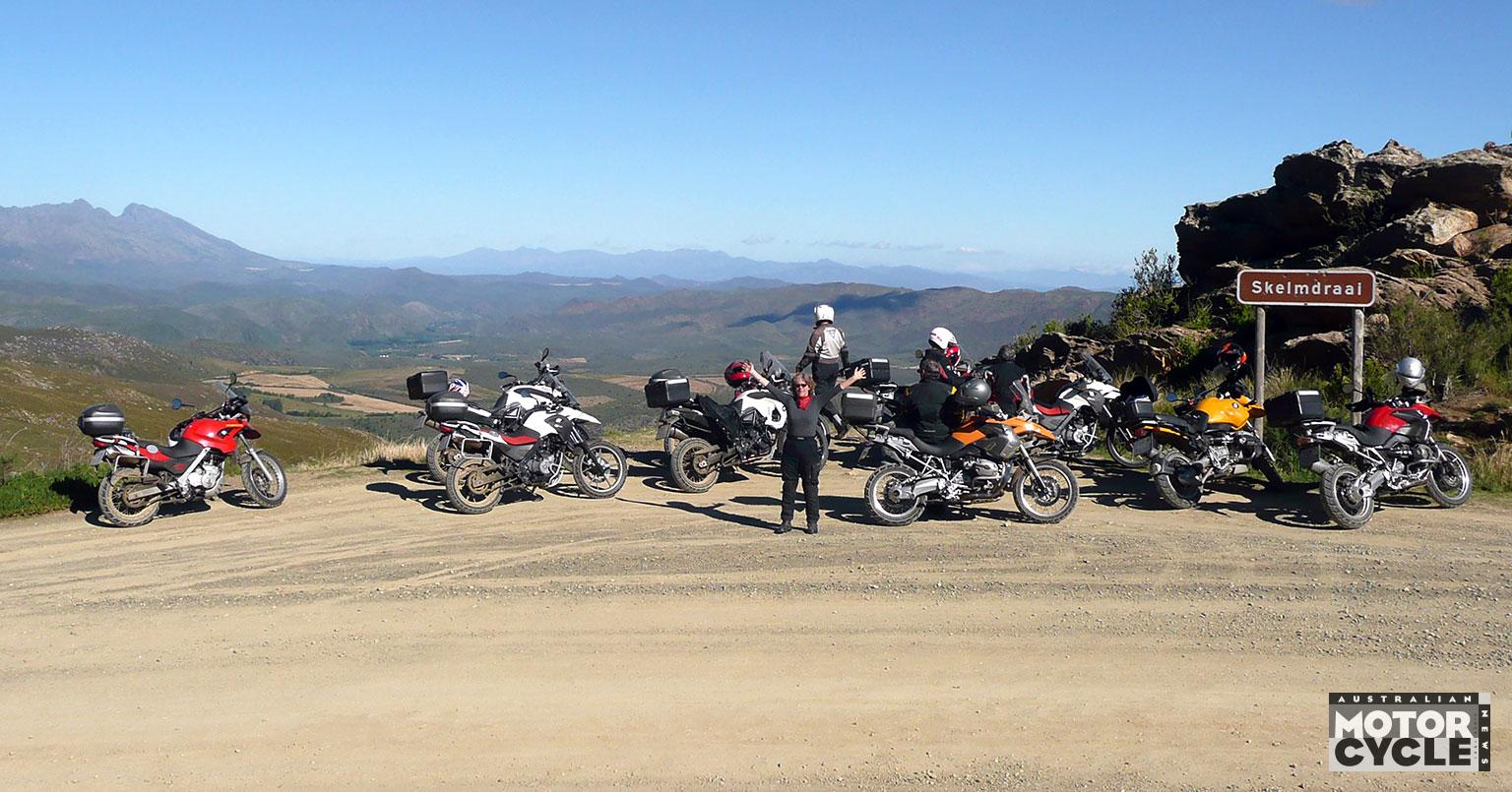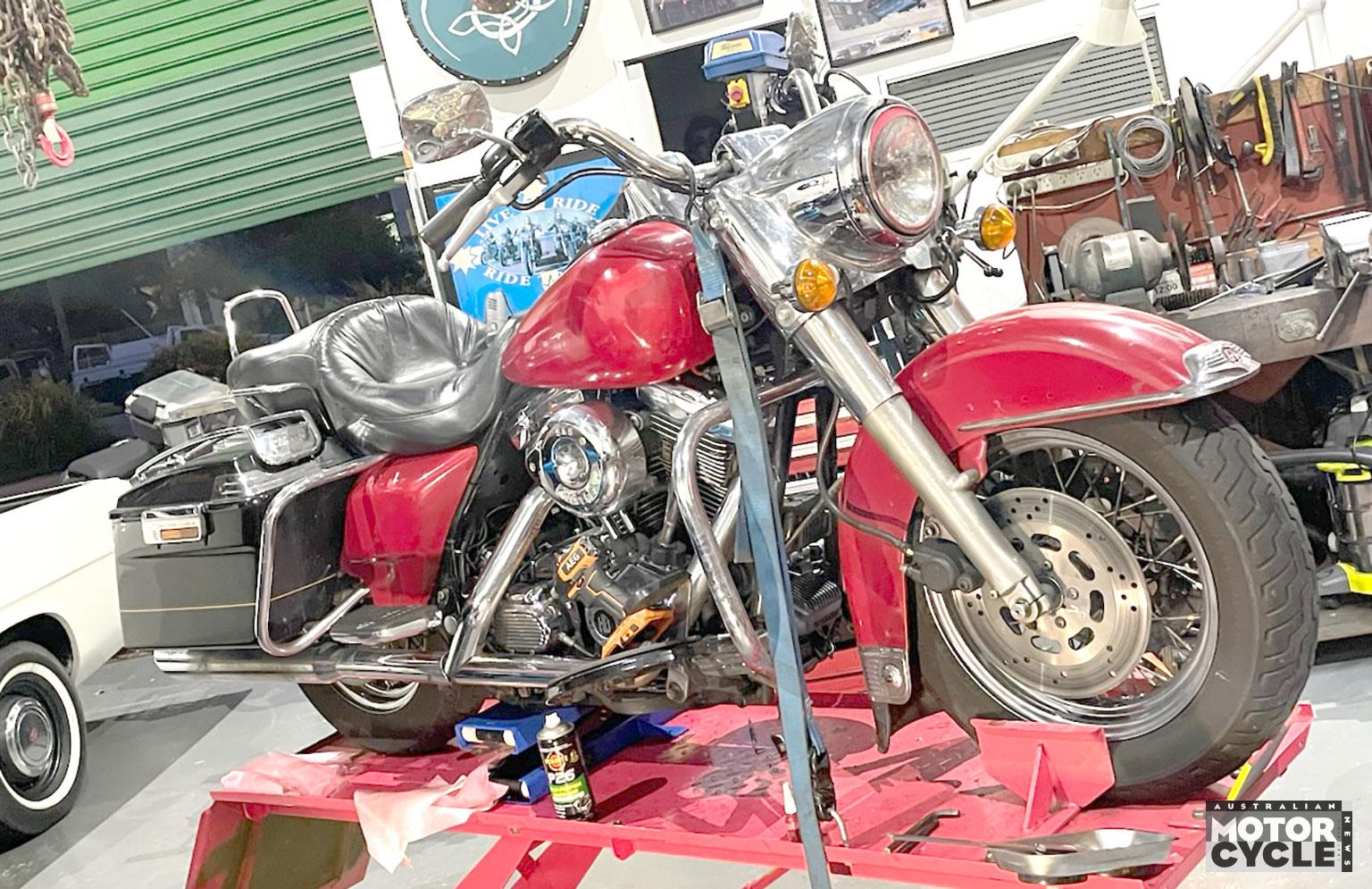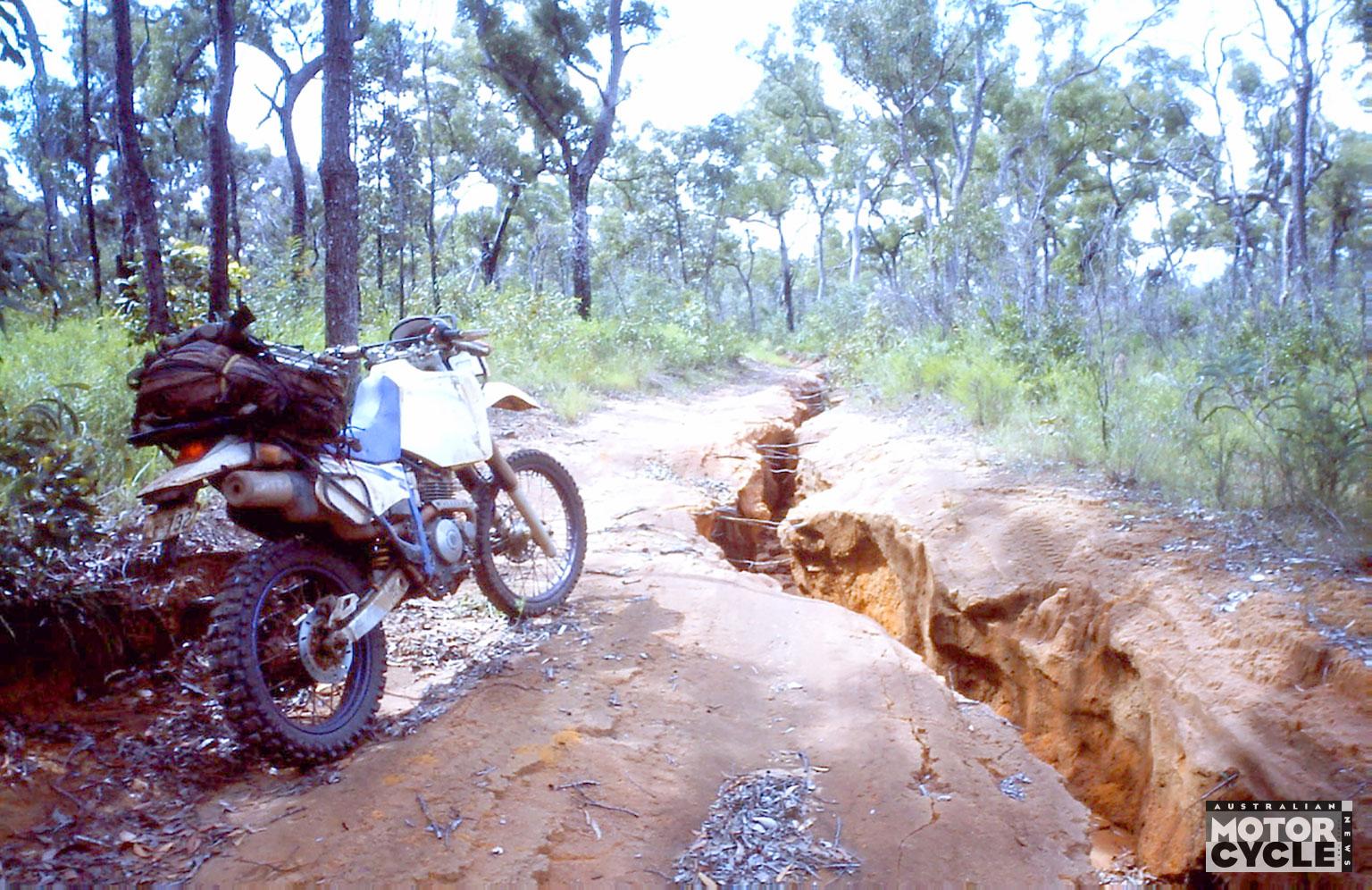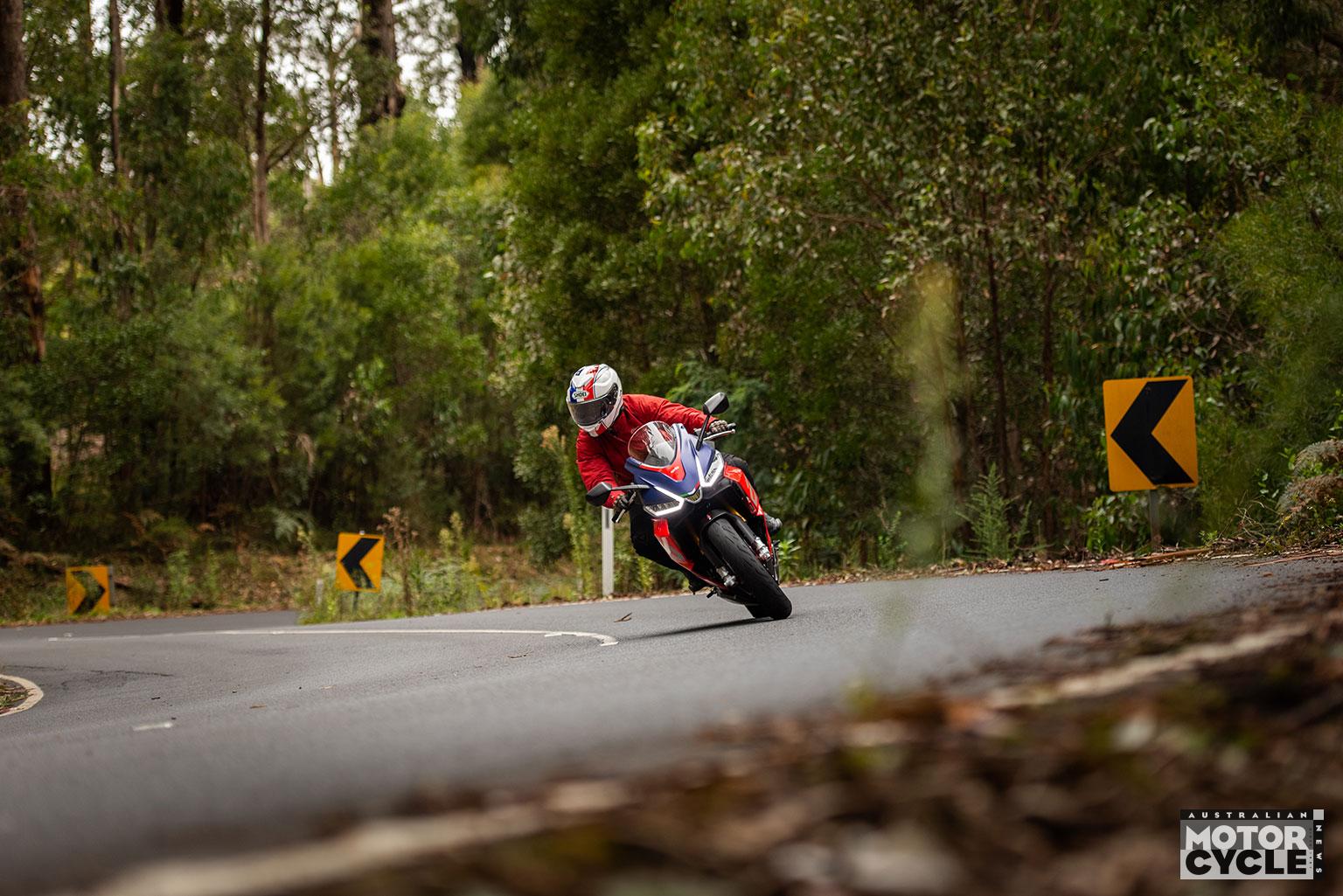In search of Shangri-La: Is it a city, a myth, or a feeling found in the unexpected turns of the road? Acclaimed shooter Martin Bissig rode through places few Westerners ever see in order to find out.
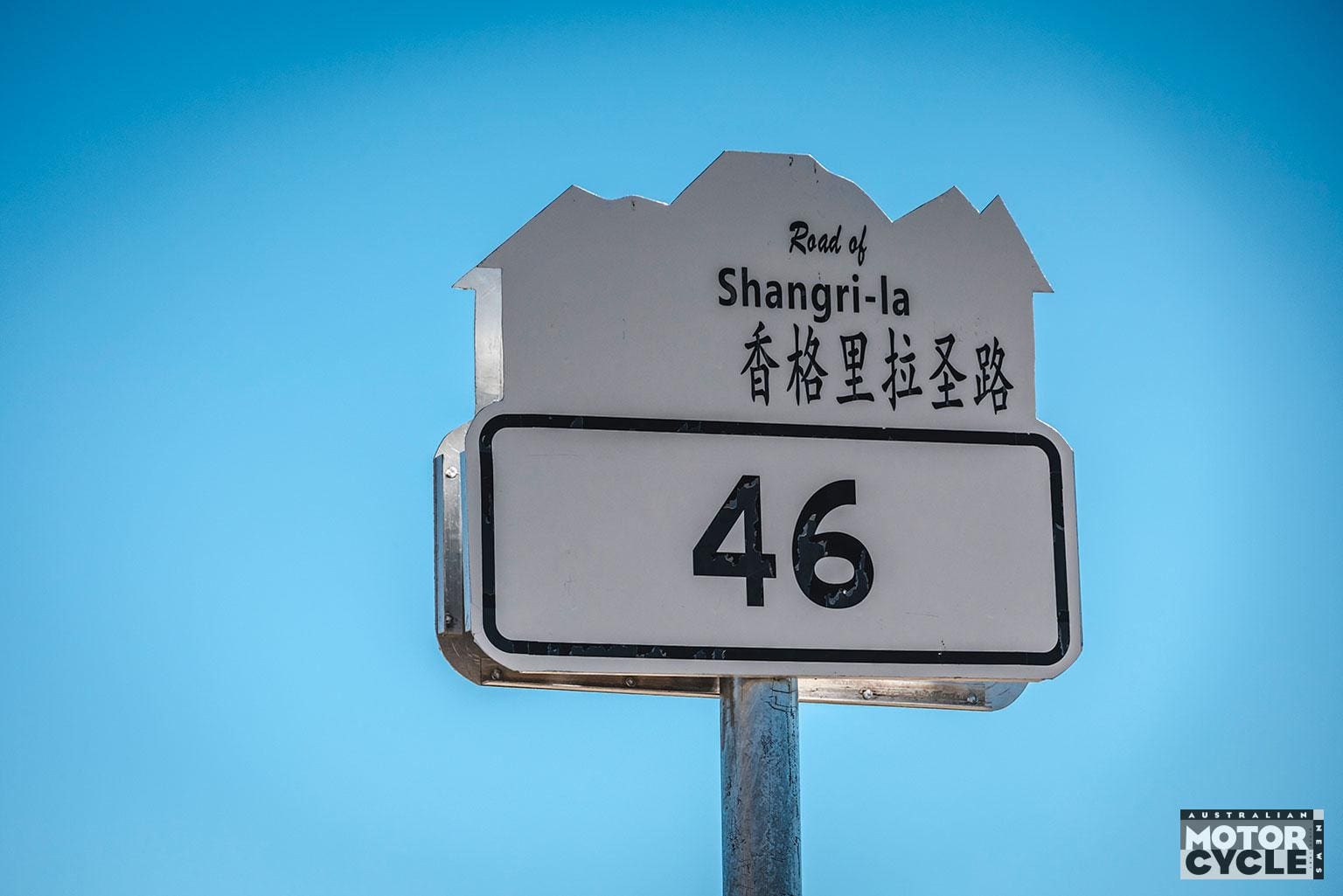
I first met Ibin in the summer of 2023. I was in Chongli, China, shooting a massive trail-running event for a local company. From the moment he started guiding me around, I felt an immediate bond. His English was excellent, still a rarity in China, and our conversations ranged from everyday humour to deeper discussions of culture and politics.
One evening, as we relaxed from a long day, Ibin showed me photos from a motorcycle trip he’d taken: snaking mountain roads, remote villages perched on cliffs and breathtaking panoramas of snow-capped peaks. It didn’t take much convincing. By that night, I’d already texted my friends Thomas, Oliver and Ralf back in Switzerland.
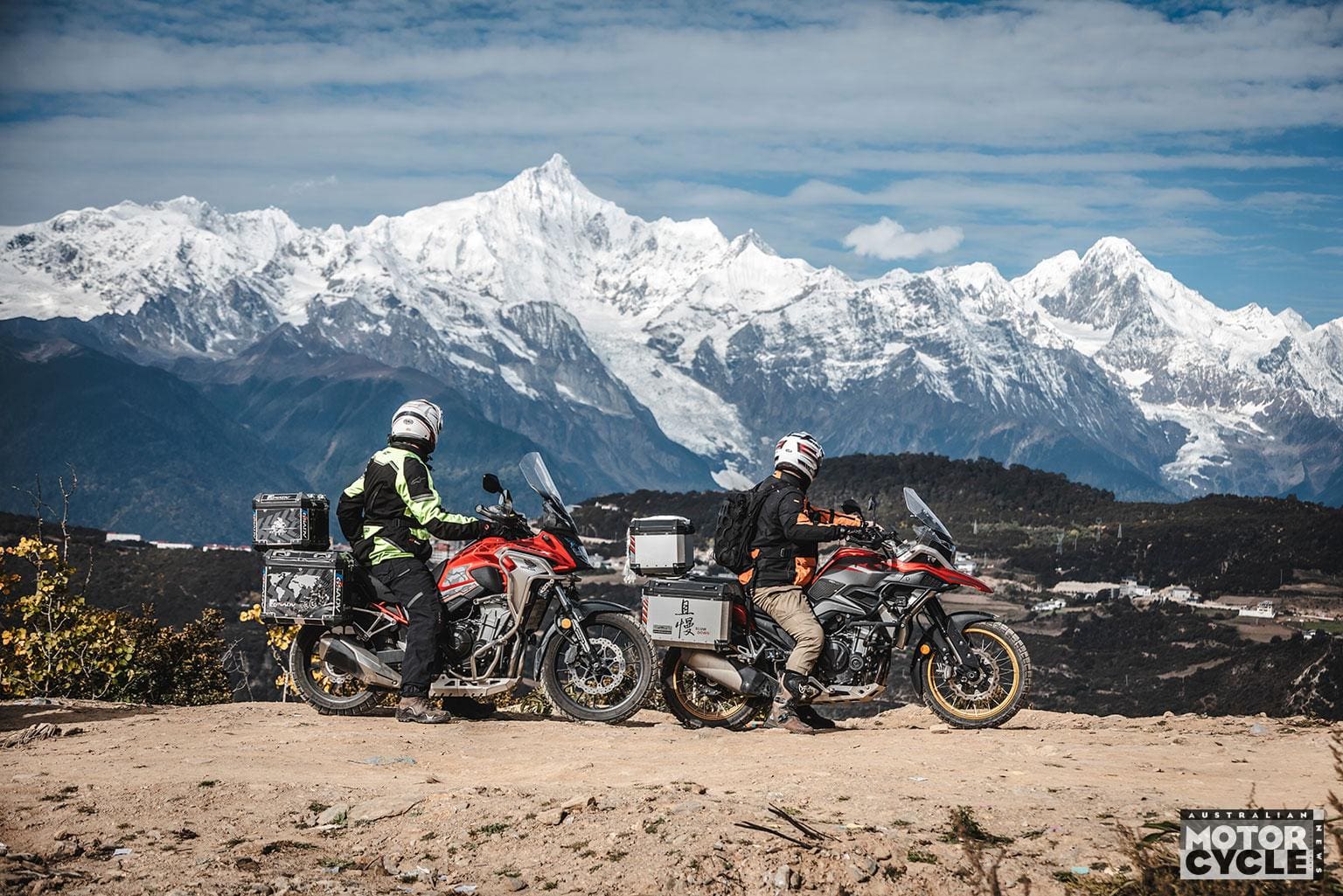
“Guys, what if we rode through China next autumn?”
Their enthusiastic responses sealed it. We set the date for October 2024.
Planning a big ride in China wasn’t at all straightforward. Mobile payments, translation apps and temporary driver’s licences all posed challenges.
We learned that you can’t simply show up with your international licence; you must register at a police station and apply for a temporary Chinese licence. Even with Ibin’s help, we struggled to find an official translation agency. At one point, we realised the red stamp on our licences was invalid – news that arrived just as we were flying out of Beijing, China’s capital city.
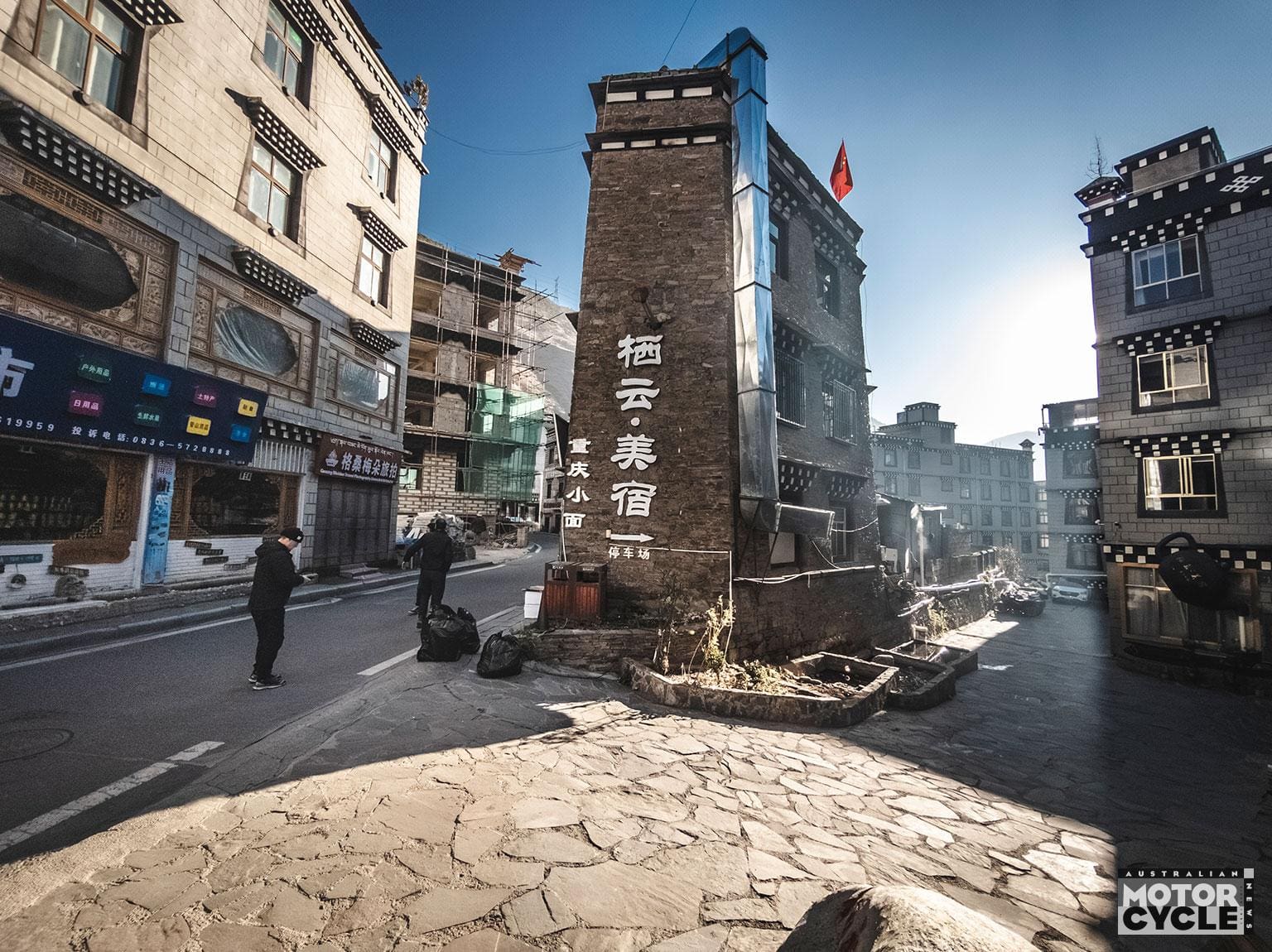
Fortunately, we solved it at the last minute, although a critical mistake nearly restricted us to renting only cars instead of motorcycles.
Would we be able to ride at all?
From Lijiang to Shangri-La
We landed in Lijiang in the northwestern part of China’s Yunnan province with a sense of relief. Ibin greeted us warmly at the airport and by evening we were strolling through the old town’s cobblestone alleys, crossing small canals by ornate bridges and sampling local dishes.
The next day, we went to pick up our bikes at a local rental shop: three Chinese-made Kove 500X models and a Honda 500cc. Despite minor mechanical flaws, we tightened a few screws and attached our luggage.
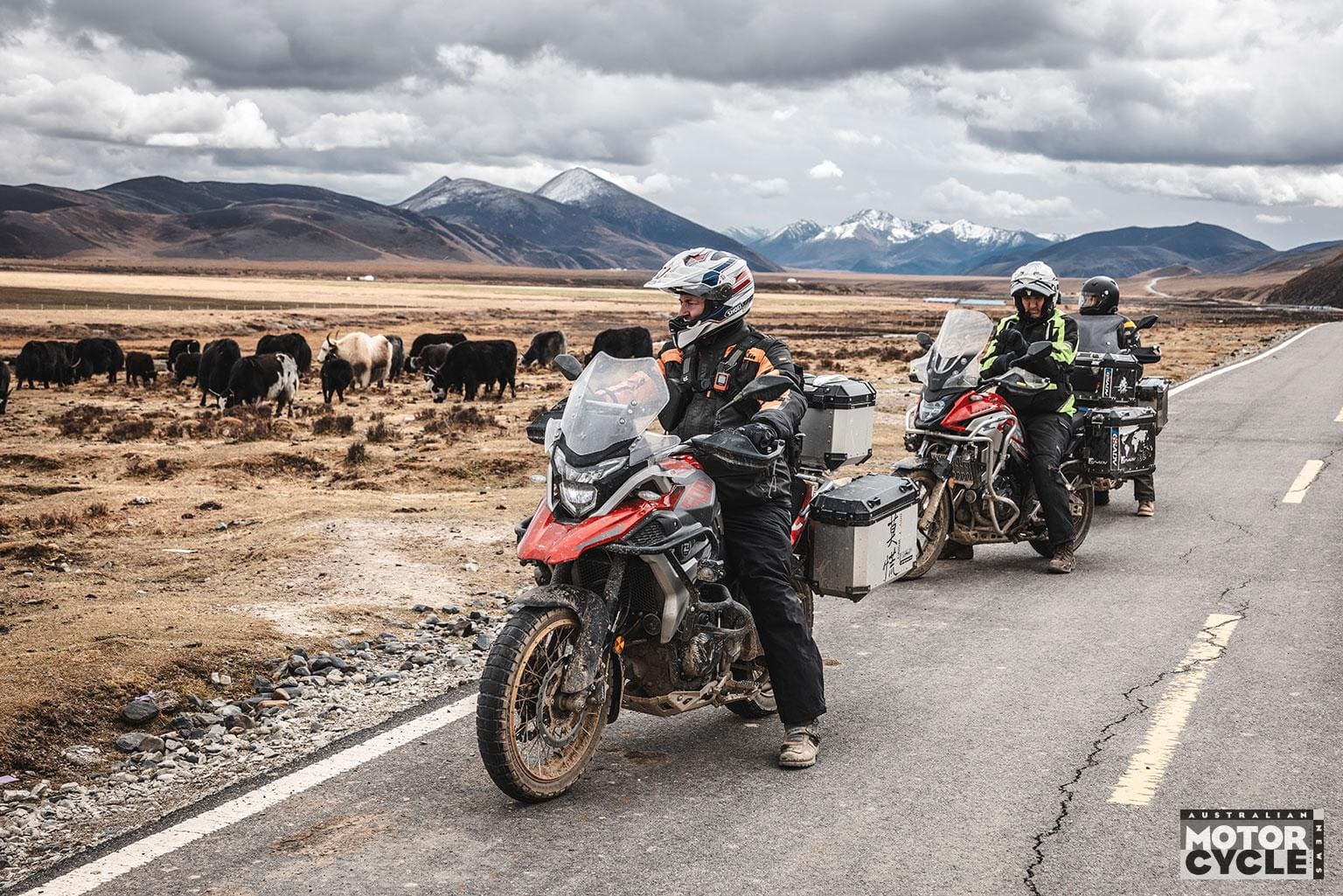
Paperwork was unexpectedly lax. No formal ID checks, no deposits and no questions asked. For Western riders like us, it felt surreal – yet it also gave us a refreshing sense of freedom.
Lijiang sits 2400m above sea level. We needed to prepare for huge altitude swings on this trip – maybe as high as 4700m and as low as the subtropical valleys at 2000m. Temperatures could range from below freezing to a pleasant 25C.
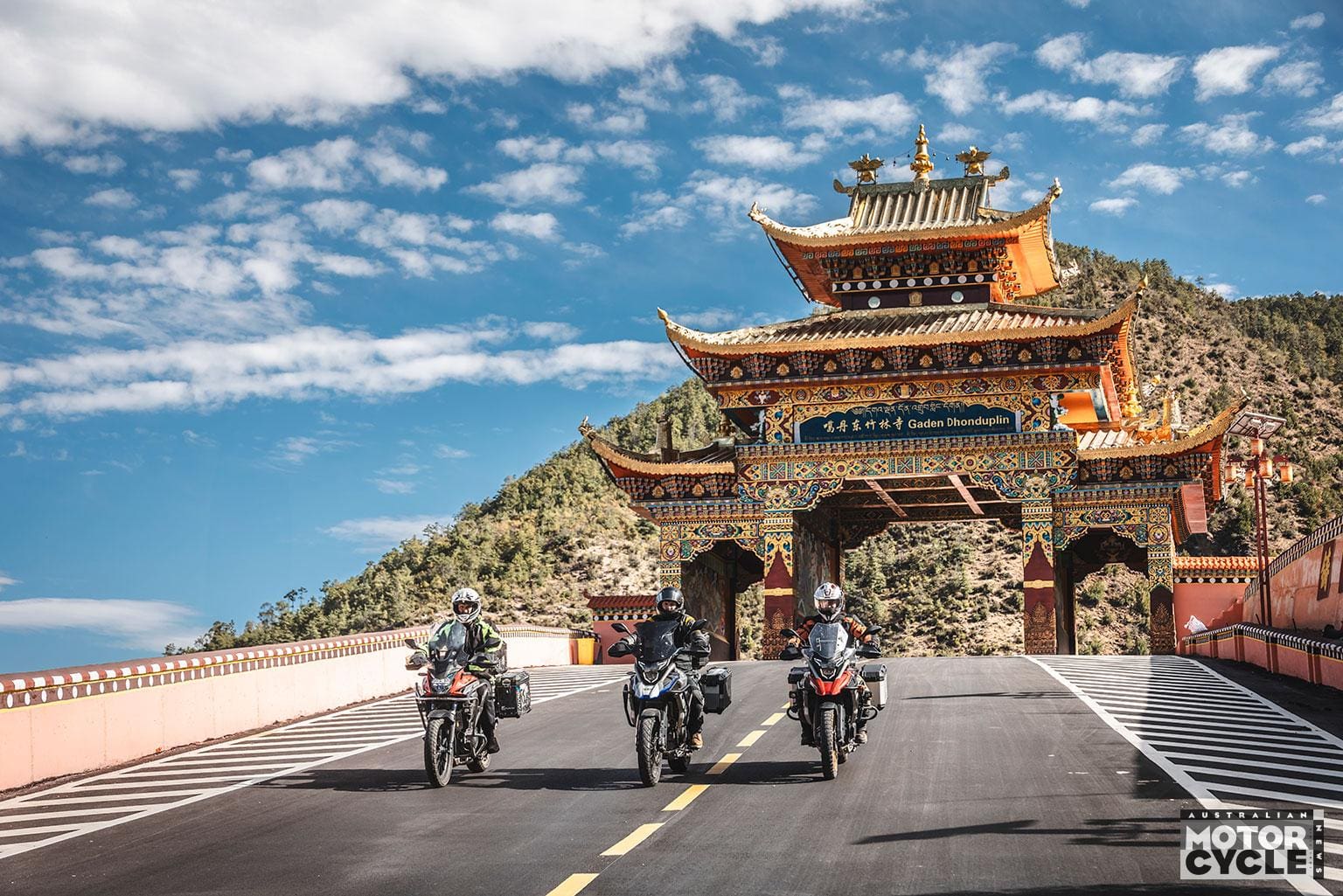
With our bikes sorted, we left the city, anxious for the adventure ahead.
Our first significant ride was about 200km on well-maintained expressways. We could sneak through the toll booths without paying (a small perk for motorcyclists), and traffic was minimal because of the high toll fees for cars.

The road climbed steadily. Before long, a massive golden stupa – a dome-like Buddhist monument containing historic relics – came into view. This was a clear sign we were entering Tibetan territory. We arrived in the city officially called Shangri-La around noon.
Once a quiet Tibetan town, Shangri-La now bustles with Chinese tourists. Still, prayer flags, monasteries and a distinctly Tibetan atmosphere shone through. Despite the touristy sheen, the spiritual pulse remained strong.
Tucked among modern cafes and shops were temples and chanting monks, reminding us of the city’s deep cultural roots.
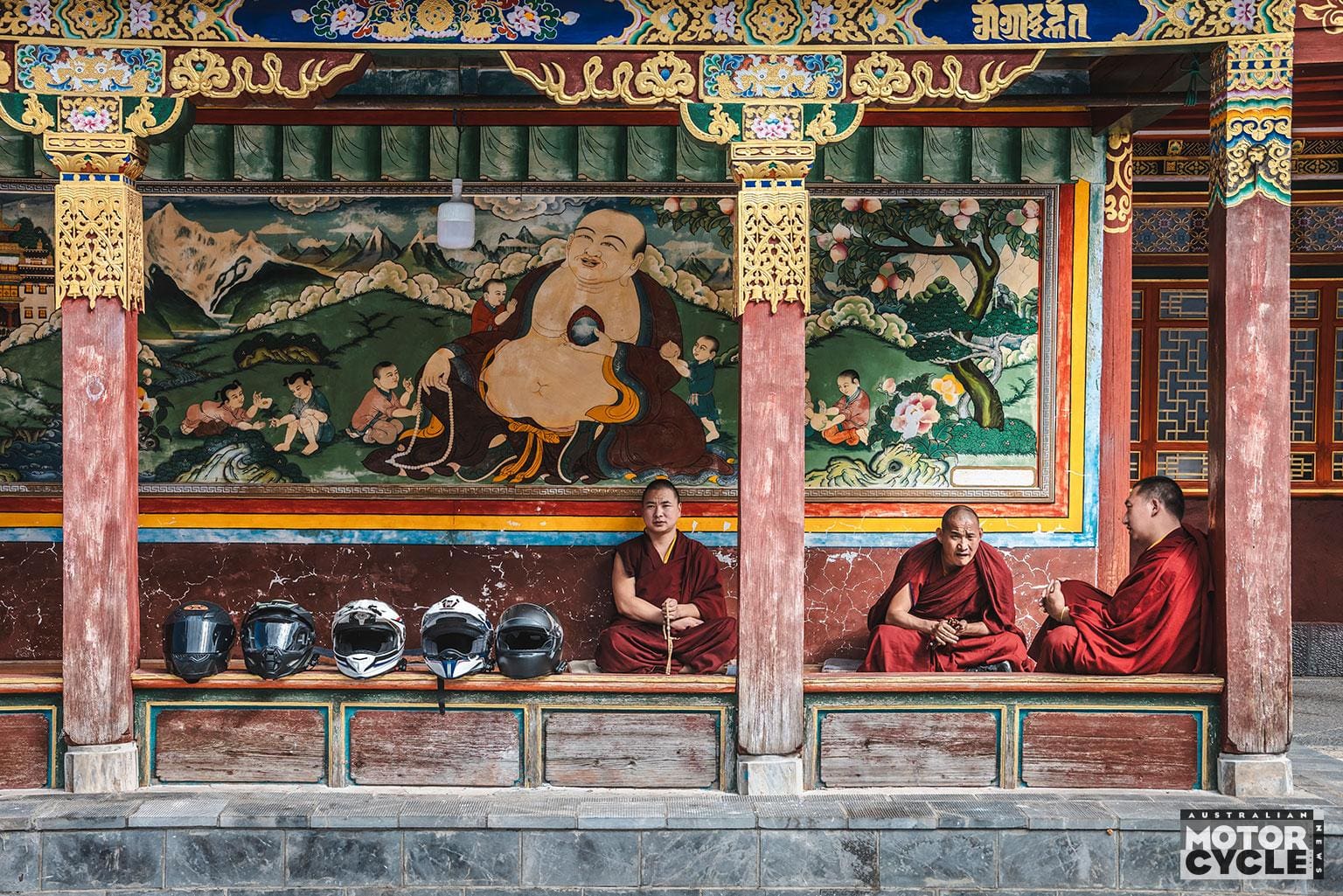
Determined to witness a less commercialised side of Shangri-La, we woke before dawn to visit Songzanlin Monastery. Ibin suggested a side road that might let us bypass the tourist checkpoint. It worked. We slipped past an unmanned gate and arrived at the lake in front of the monastery minutes before sunrise.
In the freezing cold, we scrambled up a small hill adorned with prayer flags. As the sun rose, the monastery’s golden roofs and the misty lake glowed under warm, early light. It was my first photographic treasure of the trip – the fleeting kind you almost never plan but always hope to stumble upon.
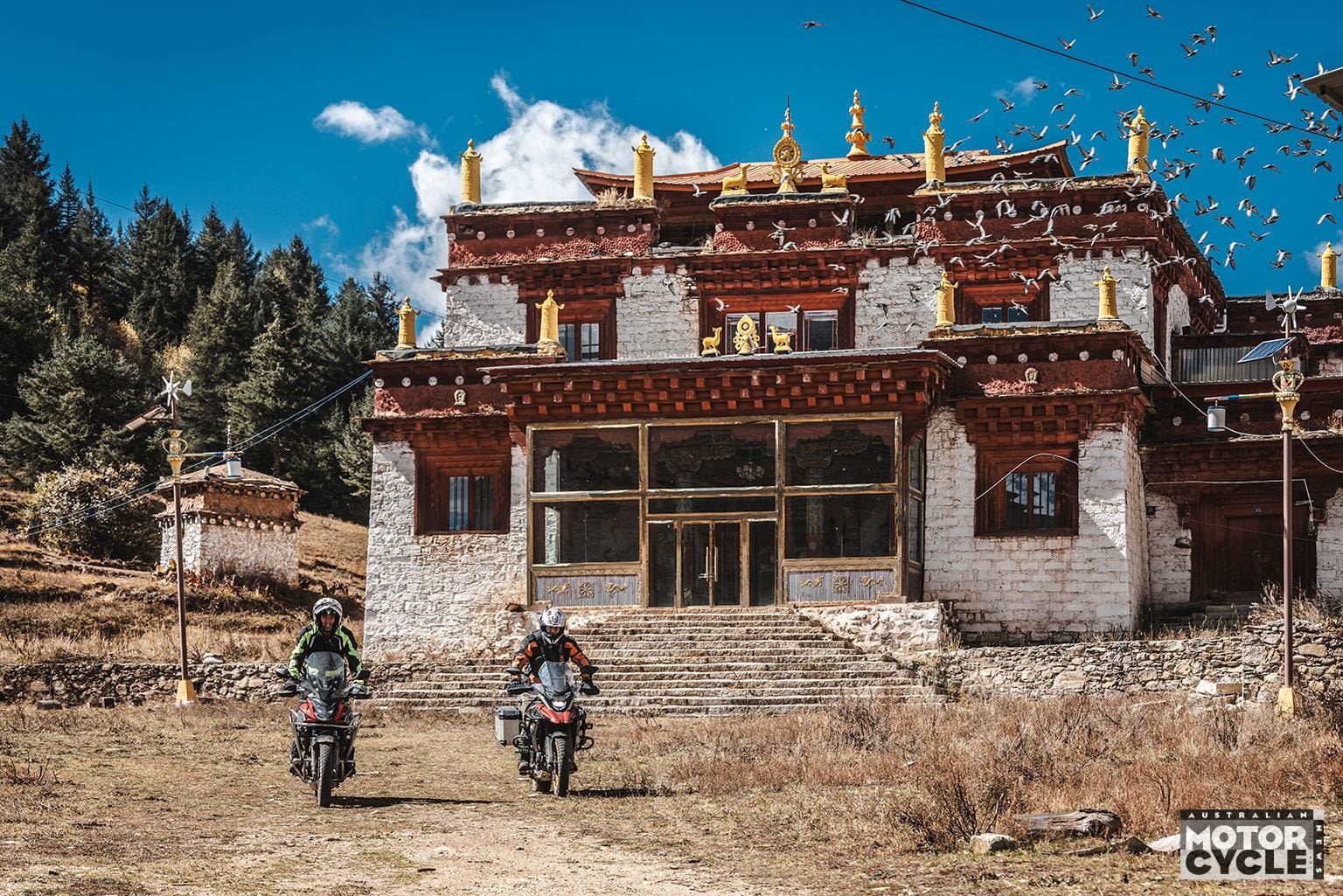
The Road to Meili Snow Mountains
That morning, we set off for the Meili Snow Mountains. Although Ibin described himself as an atheist, it was clear these peaks moved him. The roads were smooth at first but soon filled with trucks and buses – this was the main artery from Yunnan to Tibet.
Tunnels plunged us into darkness, thick with diesel fumes. After proving our riding chops, we veered onto a less-travelled route, a 4320m pass topped with gravel roads. It was my first real off-road experience on a motorcycle. My heart pounded, each stone rattling under the tires, but the view at the summit erased all fears: jagged snowy peaks stretching into the horizon.
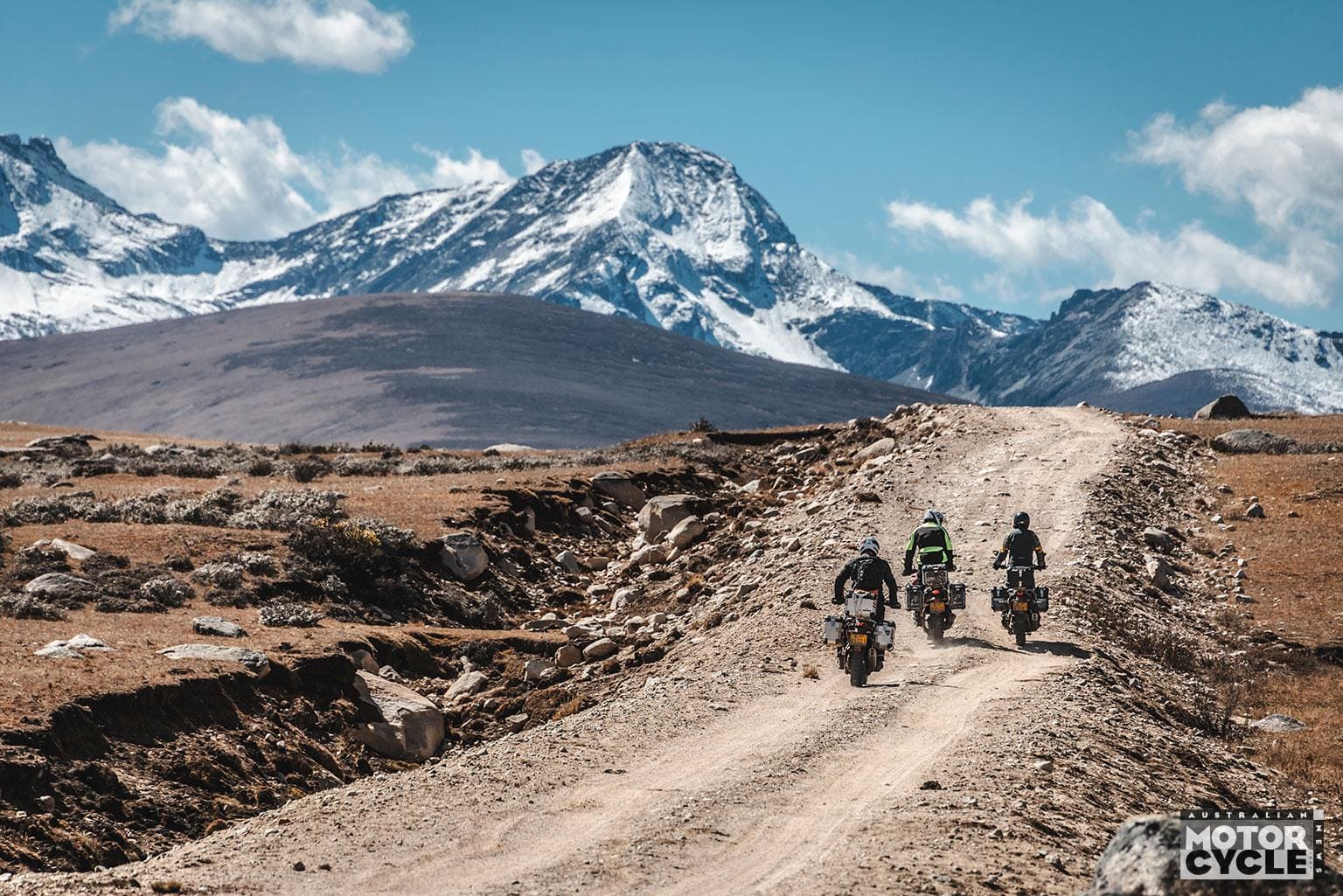
When we finally reached a small town called Felasi, we settled into a cafe with glass walls framing the mountains. In October, clouds often shroud the highest summits. Luck was on our side the next morning, though; the peaks emerged in full glory at sunrise, tinted gold in the clear sky.
Of course, we weren’t alone. Drones buzzed overhead and Chinese tourists snapped away in traditional costumes. We left the main viewing terrace for a quieter vantage, capturing images of colourful prayer flags fluttering in the crisp air. Everyone stood in awe, cameras clicking, hearts full.

Our route then doubled back, descending to the Yangtze River at a warmer 2000m. We shed our jackets and gloves, amazed at how drastically temperatures had changed.
Leaving the well-travelled roads, we followed Ibin into remote Sichuan. Heavy summer rains had left debris and gravel across the tarmac, and we carefully dodged loose stones.
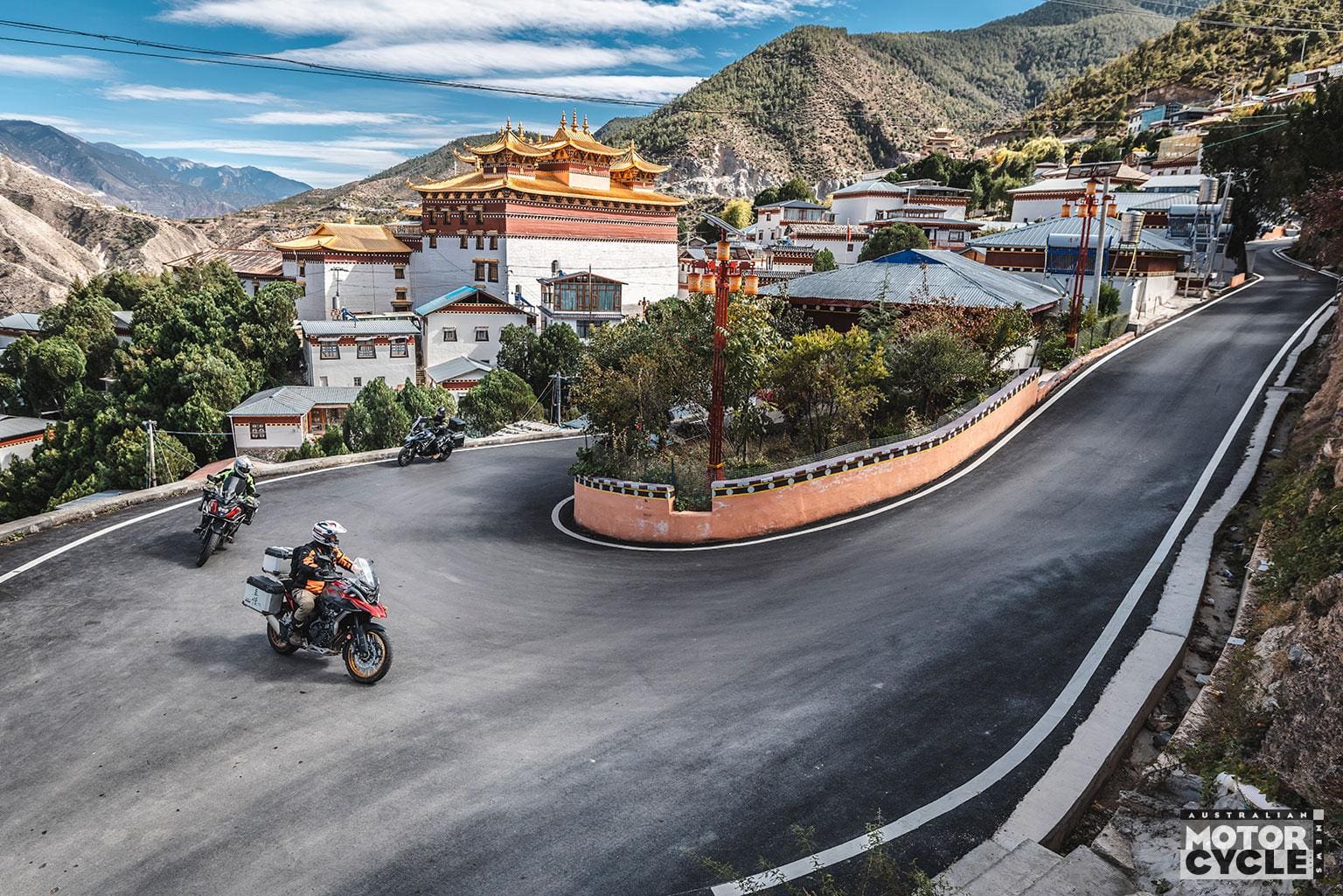
Eventually, we climbed another 4700m pass, with each kilometre demanding focus on precarious switchbacks. On the far side, the unpaved descent tested our off-road skills in fading light. When we finally pulled into the tiny village of Chini, it was nearly nightfall.

Chini, high in the mountains of Sichuan, had only recently become accessible by road. Despite some new interest stirred by Chinese social media, western visitors were rare. We crammed ourselves into a family’s guesthouse, borrowing their daughter’s room, no heating, just thick blankets and our wool hats for warmth. Dinner was momos (Tibetan dumplings) and fresh bread in a local home.
Their hospitality and laughter around the fire eased the day’s exhaustion.
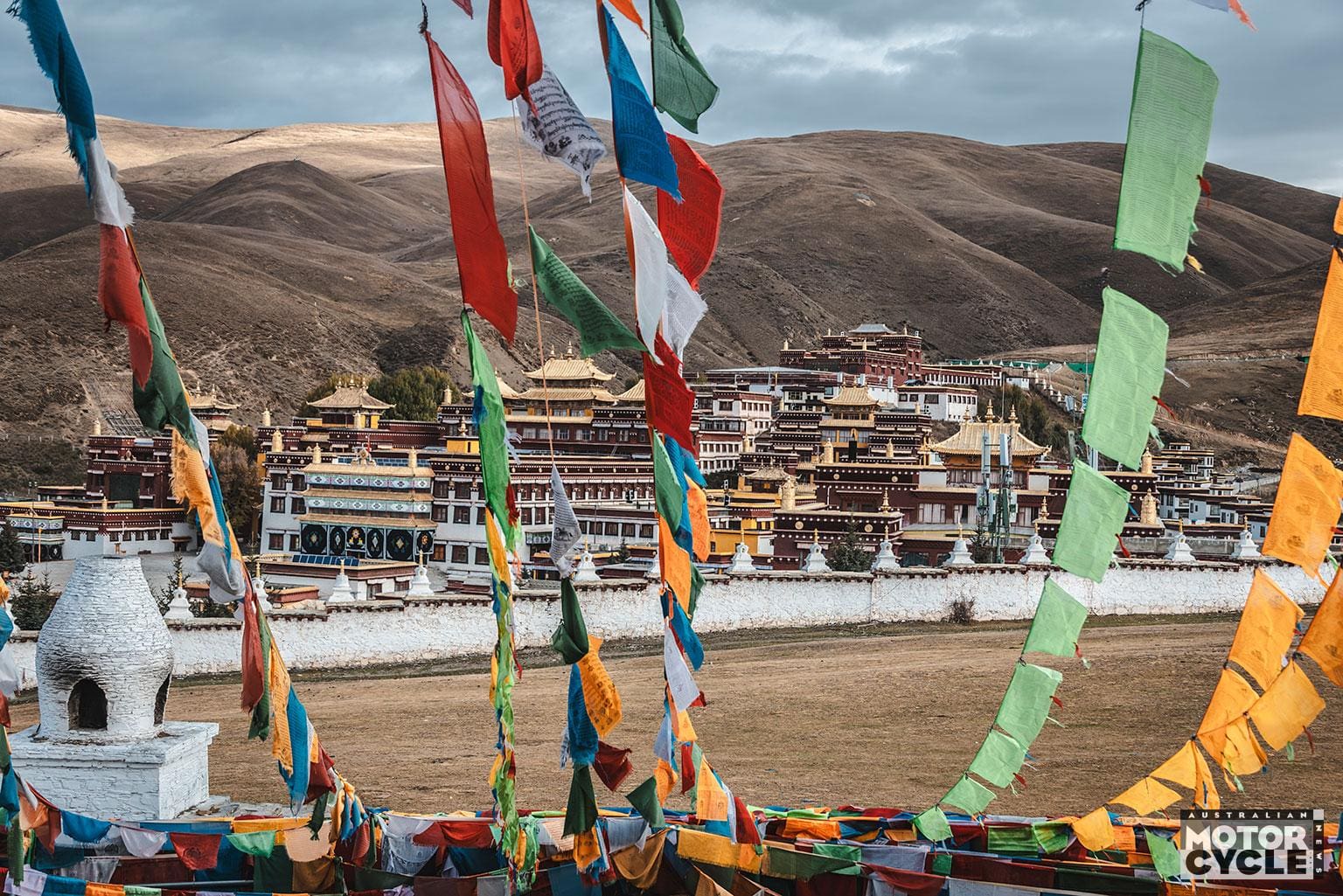
Encounters on the Tibetan Plateau
The next day, we tried reaching a nearby temple but found the road closed for construction. Instead, we wound up chatting with a group of Tibetan men on a plateau. They spoke minimal Mandarin, so we relied on gestures and the few Tibetan words Ibin knew.
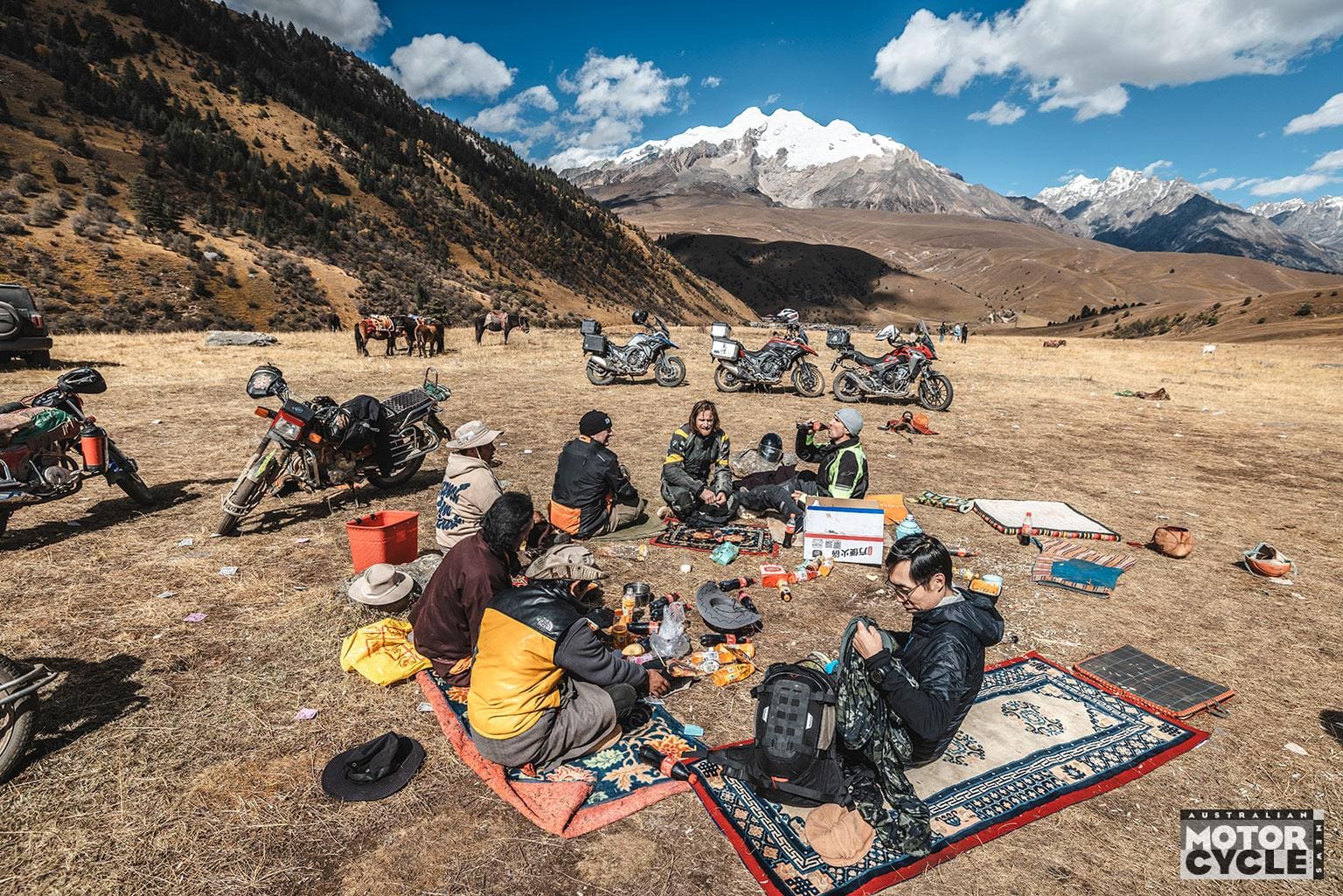
They told us about a small trail leading to a scenic viewpoint. We paid a small ‘toll’ and rode on, tackling rocky climbs beneath evergreen forests. The vantage point, at nearly 4000m, opened onto a world of jagged peaks and drifting clouds. Going back down those slippery paths was just as challenging – my arms ached, and my concentration was intense.
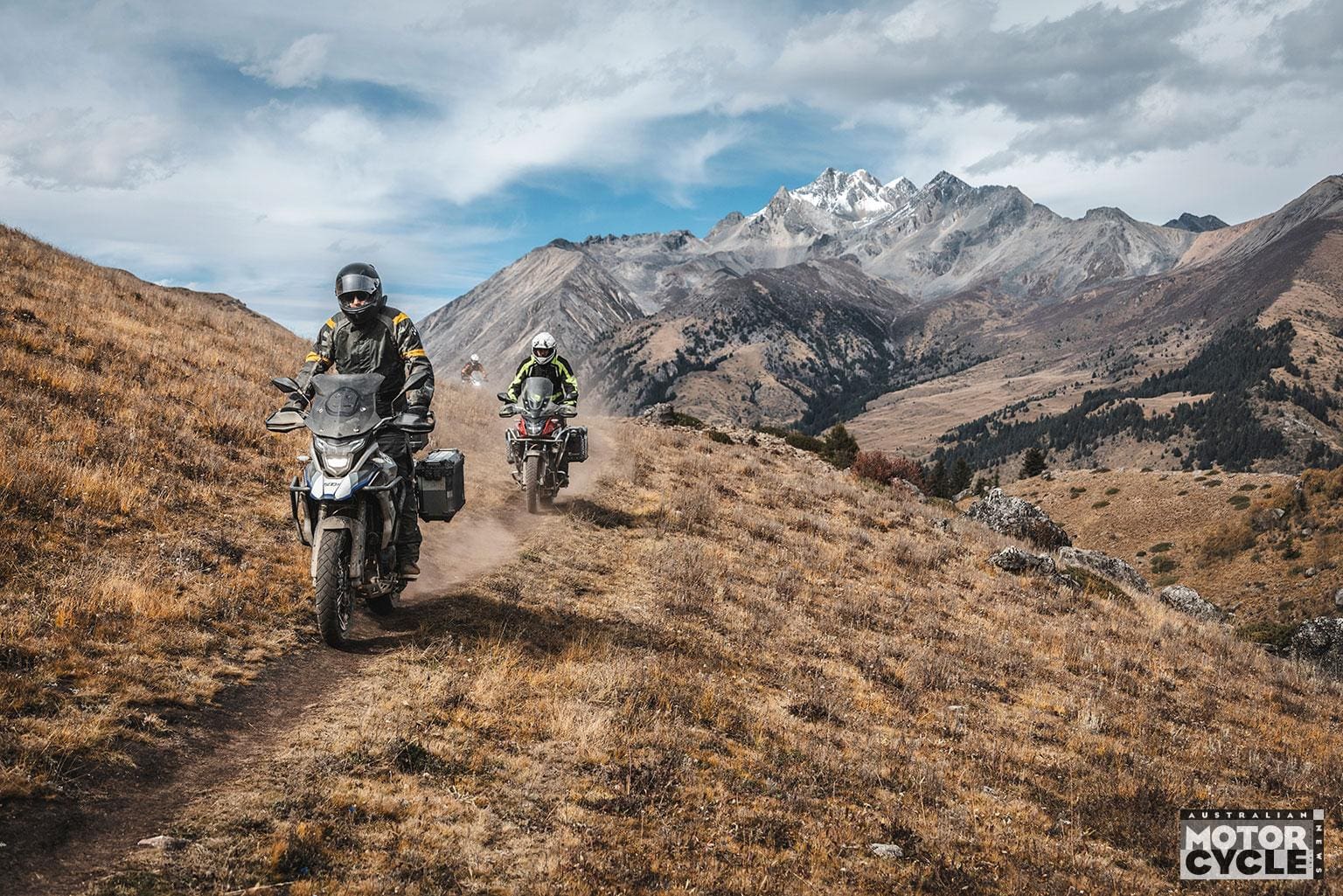
A short while later, we set our sights on Yarchen Gar, a famed monastery city that a friend had described as a sea of red-roofed huts. But as we neared, police checkpoints blocked foreign visitors. Suddenly we found ourselves escorted away by stern officers who insisted we had to leave that region immediately.
Communication was difficult, our passports were taken, and tensions ran high. In the end, they returned our documents at a hotel outside the restricted zone, and that was that. No Yarchen Gar for us.
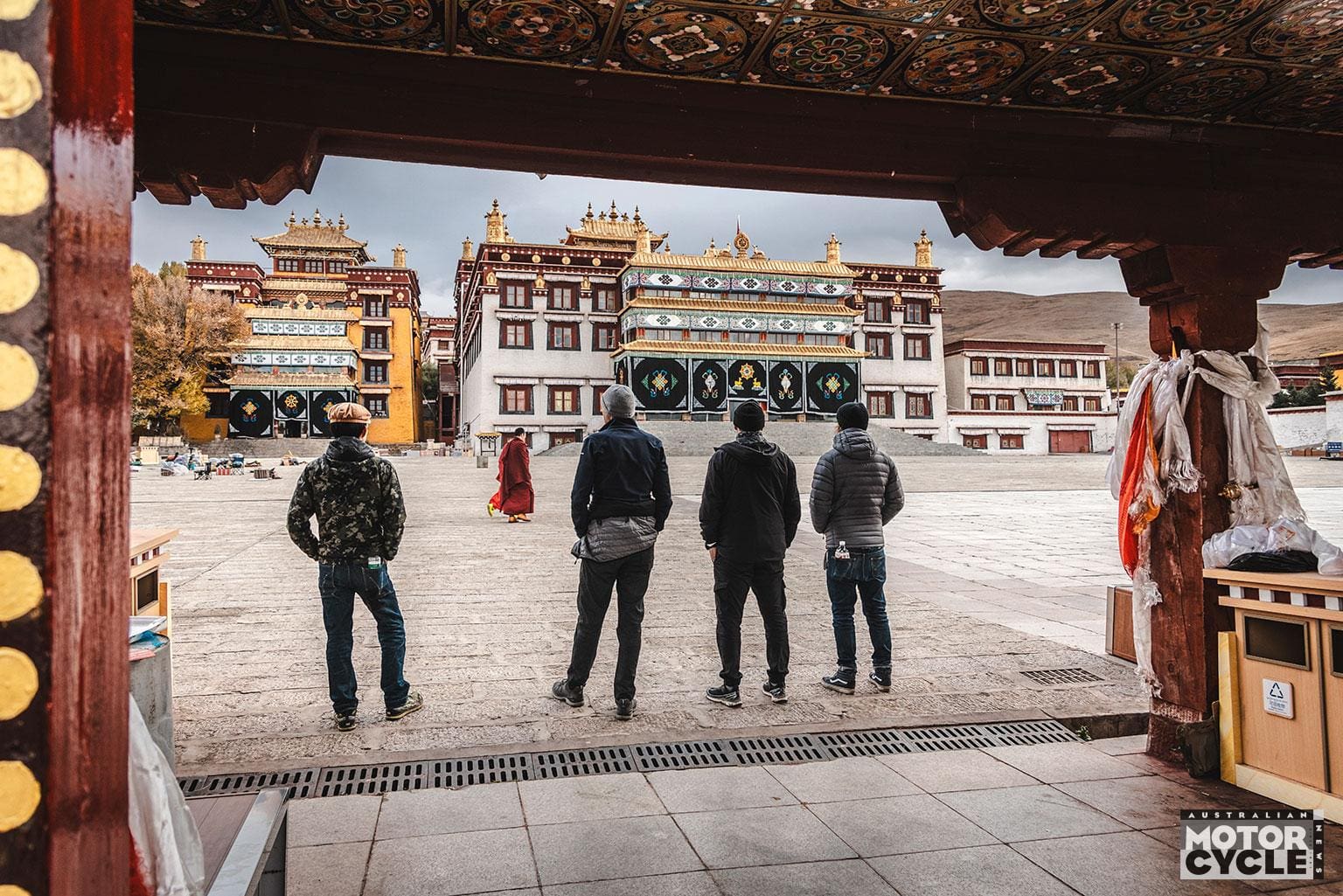
As if the trip weren’t adventurous enough, we woke one morning to a blanket of fresh snow, 20cm deep. We needed to cross a pass that, while closed to cars, might still let motorcycles through.
Riding in snow was a new challenge. Traction vanished and our wheels skidded on muddy tracks. Despite frigid altitudes, soon we were descending again, the land shifting back to green valleys. Finally, we arrived in Litang, a Tibetan city at 4000m.
Ibin had crashed his bike earlier and now had a new one delivered. We warmed ourselves in a local restaurant, sipping steaming hot pot soup, reflecting on how unpredictable China’s southwestern roads could be.
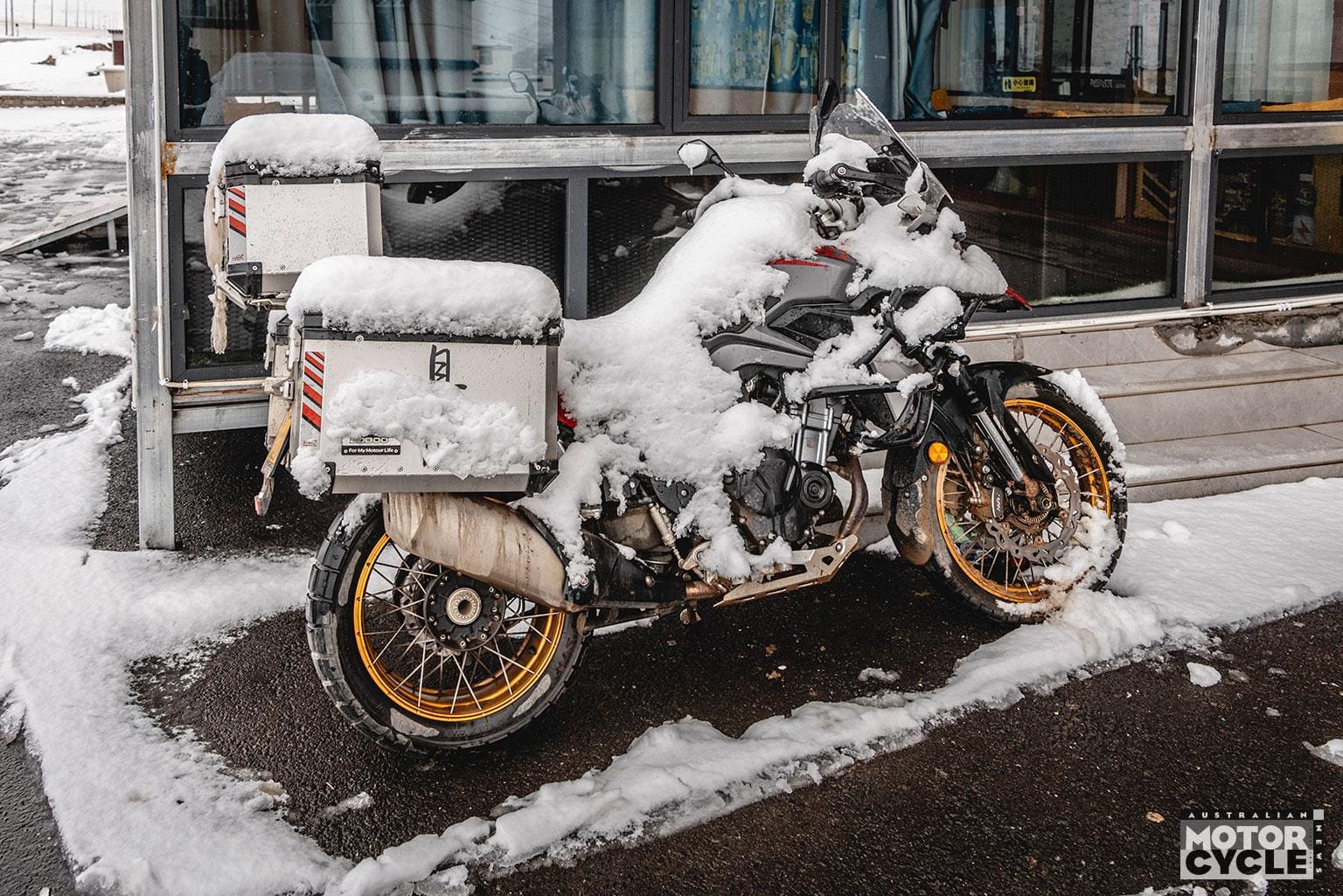
The Long Way to Lugu Lake
Hoping to ride to Lugu Lake, we set out from Litang late one day. Traffic was fine until we hit a tight hairpin turn on a gravelly road. My front wheel slid out, sending the bike down –and me along with it.
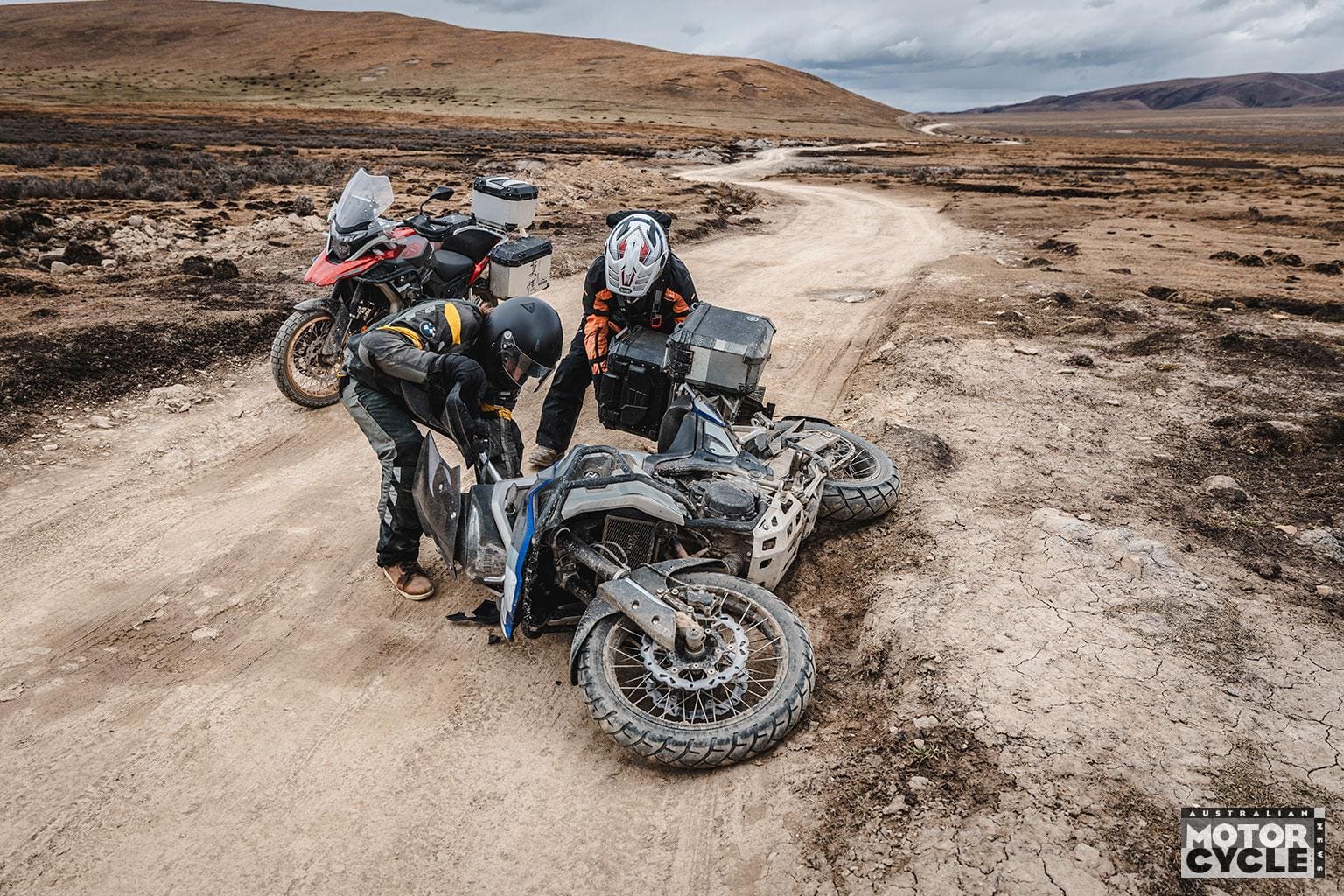
I felt a piercing pain in my foot. Over the intercom, my friends asked if I was okay. “It hurts, but let’s keep going,” I responded, determined to reach Lugu Lake before dark.
I spent the next few hours in a haze of pain and worry. If my foot was truly broken, how would I continue – and what about my upcoming photoshoots when returning to Switzerland?
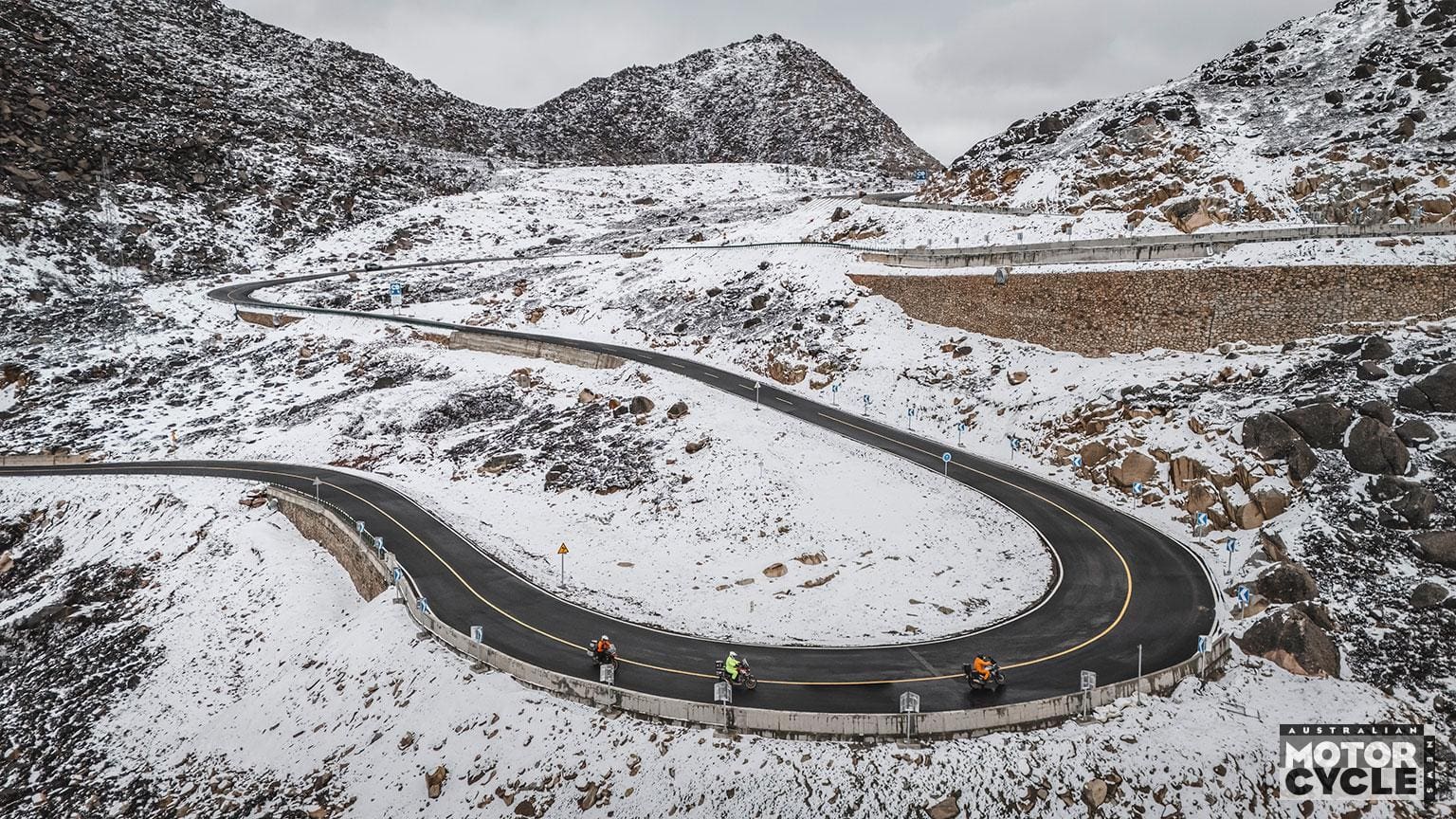
By the time we arrived it was night, my foot was throbbing and all I wanted was a shower and rest.
Morning revealed Lugu Lake’s calm beauty, but I couldn’t do the planned loop around its shores. I could barely walk. Instead, we headed back to Lijiang.
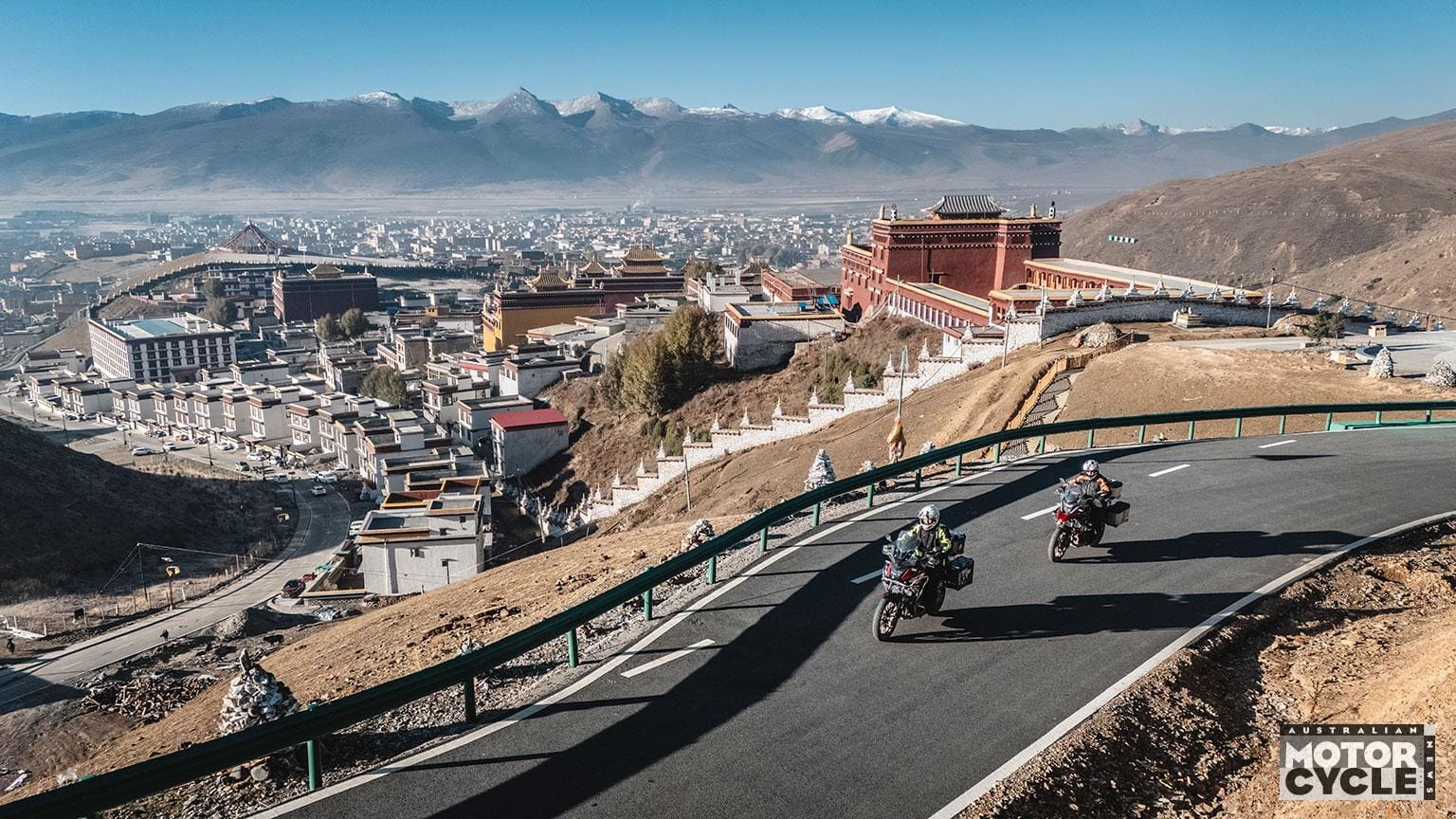
Out of nowhere, my clutch started failing. Determined not to stop, because stopping meant stalling, I timed the traffic lights with Ralf’s help via our Bluetooth intercom. We coasted through intersections right as they turned green. By the time we reached the hotel in Lijiang, my nerves were shot from all of the close calls.
A quick fix in the parking lot showed it was just a loose adjustment screw on the clutch. Problem solved – although the comedic timing of these setbacks was not lost on us.
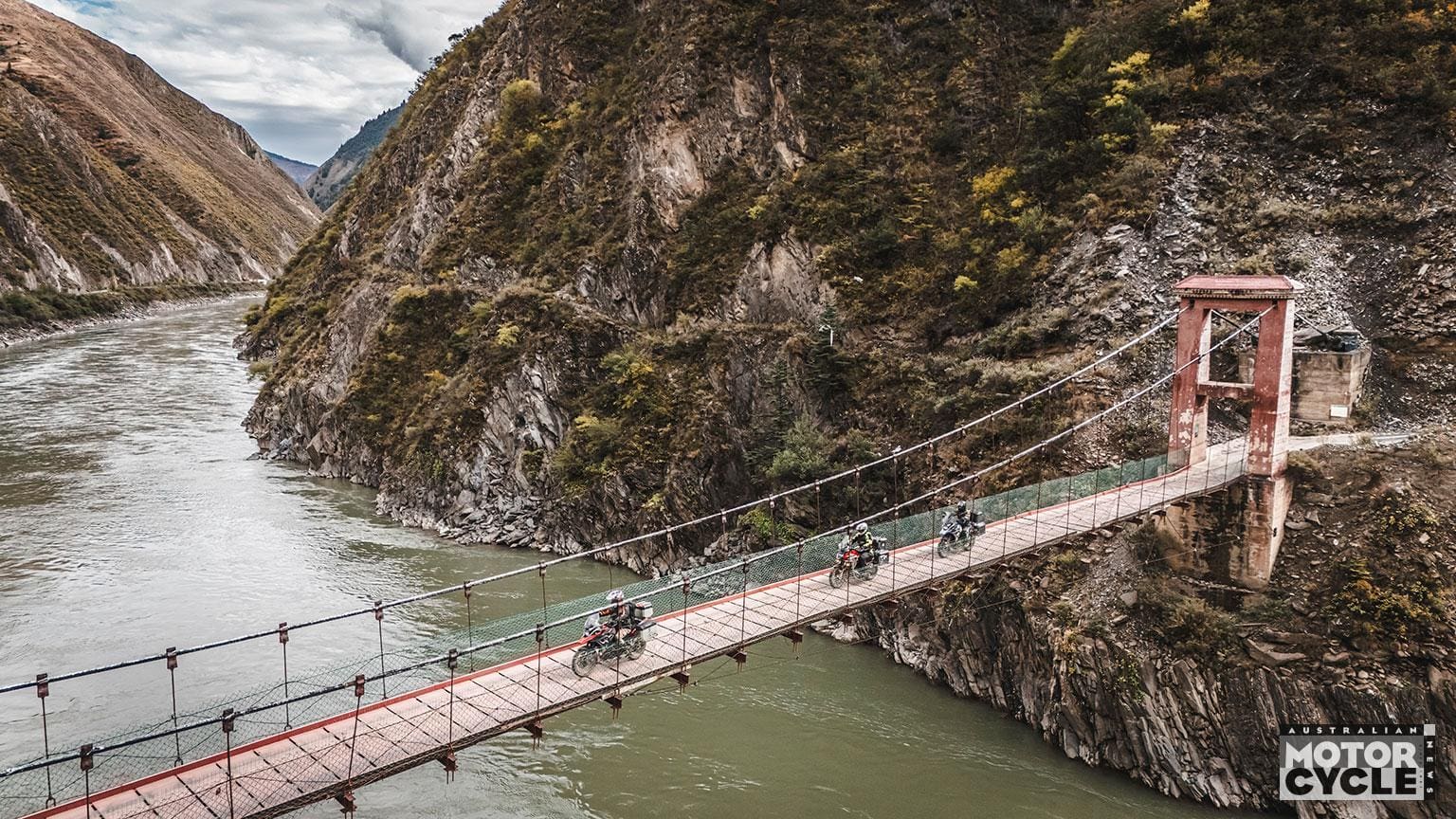
The next day, I visited a local hospital. Within 15 minutes and for the equivalent of about $10, an X-ray confirmed a broken big toe.
“No surgery needed,” the doctor said with a reassuring nod. I hobbled out on undersized crutches and rejoined the group for a final dinner.
Finding our own Shangri-La
On our last night, we gathered in a cozy restaurant, sampling all manner of Chinese and Tibetan specialties. Over steaming plates, we recounted our biggest “wow” moments: crossing Himalayan passes, sharing momos with new Tibetan friends, sneaking into Songzanlin at sunrise, and even the comedic run-ins with the police. Each twist had shaped our two-week ride in ways we never could have predicted.

Yes, I broke my toe and Ibin crashed his bike. Yes, we missed seeing Yarchen Gar. But none of that diminished the trip. We discovered places few Westerners know about, felt the warmth of remote communities and re-learned that the best experiences often come from roadblocks or detours.
As Ibin said with a grin, “Sometimes you have to take detours to discover what’s truly important.”

When I first imagined riding China’s southwestern mountains, I pictured a single highlight: the ‘Shangri-La’ from books and postcards. But in truth, the journey itself held the magic – shared laughs at roadside stalls, chance encounters on hidden trails and the camaraderie of four friends under big Tibetan skies.
In the end, Shangri-La wasn’t one place on the map but a collective feeling – a state of mind that rides along with you when you’re open to whatever the road may bring.

WHO IS MARTIN BISSIG?
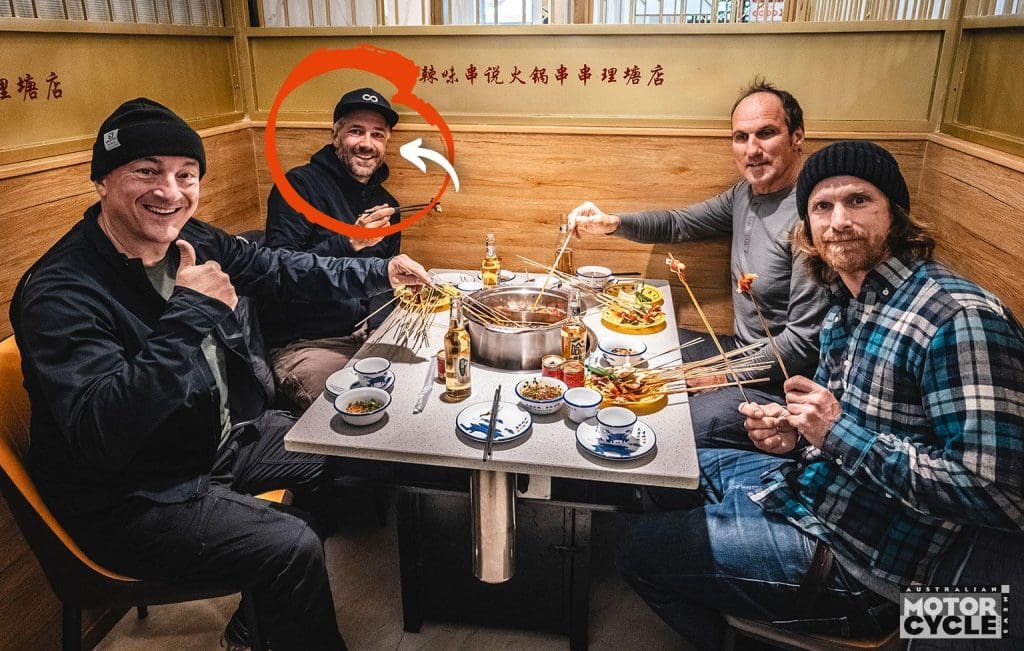
An acclaimed photographer from Switzerland who transitioned away from banking in 2003, Martin is one of Europe’s leading outdoor shooters. Renowned for his dynamic action shots, he has collaborated with elite athletes like F1’s Esteban Ocon, plus Red Bull, Adidas and many more. His work has taken him to some of the world’s most remote locations, and since 2019 he has served as a Canon Europe Ambassador and Coach. While Martin started riding motorbikes relatively late in his career – only five years ago – his newfound passion has since become an integral part of his adventurous lifestyle and creative journey.



